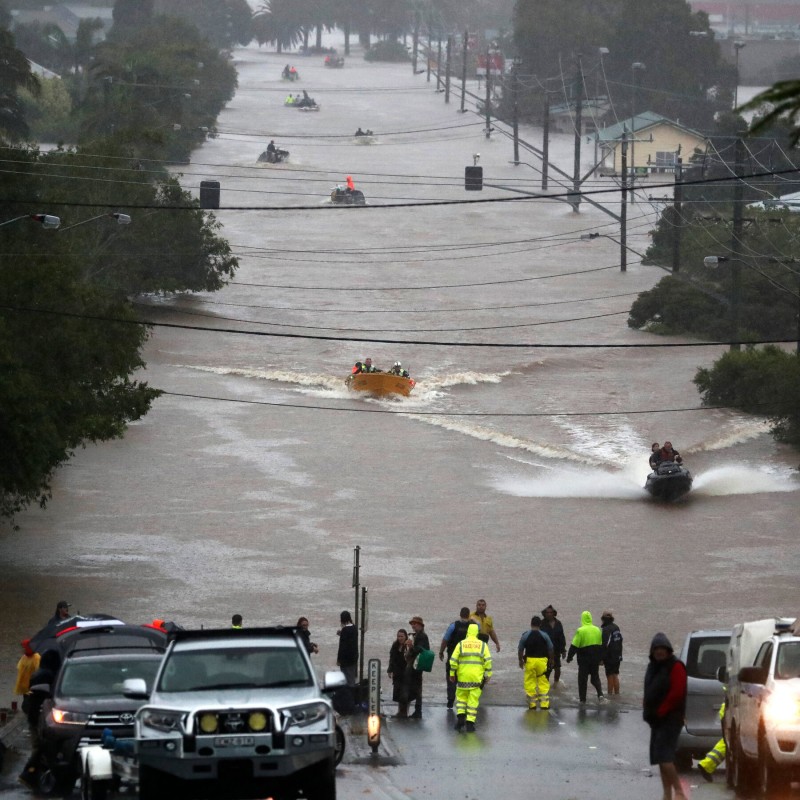
Australia: Warmer conditions in the western Pacific have resulted in torrential rain and river bursts.
Dangerous and widespread flooding has been widely reported in eastern Australia, particularly in New South Wales, over the last week. Tens of thousands of people have been forced to flee their homes as a result of severe flooding caused by burst rivers.
The central Pacific Ocean is currently in a weakening "La Nia" state, which means that sea surface temperatures in the eastern Pacific are lower than normal, while they are warmer than normal in the western Pacific, particularly around Indonesia and eastern Australia. The latter's increased warmth raises moisture content and tends to lead to wetter conditions. This has been the driving force behind the massive amounts of rain that have fallen in recent days as a result of a series of Pacific storms.
Sydney and its surrounding areas have been especially hard hit, with some areas receiving 700-800mm of rain since the weekend. This is roughly 1.5 times the average annual rainfall in this area.
More than 80,000 people have been forcibly evacuated by rising flood water, and it is the third time this year that the same regions have endured flooding. Although La Niña has been the major driver for this phenomenon, the severe characteristics of this event are also in keeping with climate breakdown predictions, which support the enhanced intensity of seasonal global rainfall events.
Over the last few days, heat and moisture have been pumped up from a long way south and west, making parts of northern Canada and Alaska extremely warm. Maximum temperatures near Alaska's north coast, well within the Arctic Circle, soared past 30 degrees Celsius, 10 degrees Celsius or more above the seasonal average. The combination of heat and dry vegetation has resulted in numerous grassland fires, some of which were sparked by lightning strikes. Thunderstorms are uncommon in this region due to the high latitude, but warmth and moisture in the atmosphere have combined to produce daily thunderstorms over the last week. Global Warming is becoming real serouious danger in this world which can cause a mass extinction of human life on earth.